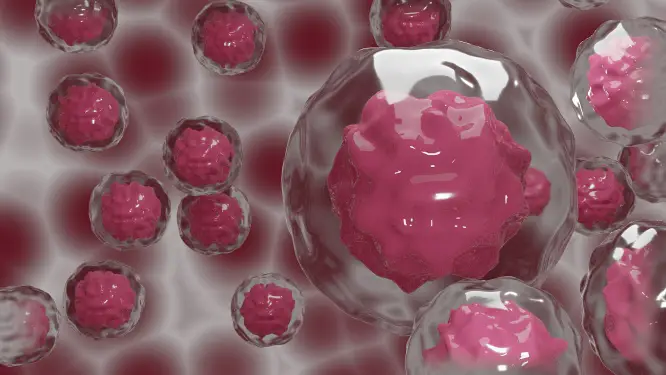Recently updated on March 25th, 2024 at 05:52 pm

Stem cells are on the verge of one of medicine’s most exciting and groundbreaking fields today. According to research, stem cells can help treat a variety of ailments by creating healthy new cells and tissue.
Many people see stem cell therapy as a miracle treatment because it applies to many medical conditions. They have a good reason to believe so because stem cell therapy has been proved to manage and relieve symptoms of neurological, auto-immune and degenerative conditions and even genetic disorders.
According to scientists, stem cell therapy carries huge potential to provide positive and beneficial effects on many health conditions, but what exactly are the diseases that can be treated with stem cells today?
What do we know about stem cells?
Stem cell therapy is the use of stem cells for the treatment of medical conditions. These stem cells are a unique type of cell found in the adult body and the developing embryo.
Stem cells have a unique and different function from other typical body cells in that they are not specialized. Specialized cells have a unique function, such as the red blood cells, whose function is to carry oxygen to target organs. Stem cells, initially, do not have that unique, specialized function. However, a stem cell can differentiate or divide to become a normal body cell with a specialized function, such as a red blood cell, a bone cell, a neuron, or any other cell.
Through this means, stem cells help the body heal by stimulating the body’s natural healing process due to restore a cell’s health after being damaged. Another beneficial capacity is that they help fight inflammation.
These incredible effects of stem cells have contributed to the curiosity of scientists to find out more about stem cells and where they come from.
Where do stem cells come from?
Stem cells, through various research, have been found in different areas of the body. Below is a list of the sources of stem cells in the body.
- Stem cells can be gotten from the blastocysts found in embryos.
- Adult body tissues also contain stem cells in the bone marrow, adipose tissue, gingiva and skin. Stem cells also have been found in the endometrium, umbilical cord, and placenta.
- Lastly, there are special stem cells known as induced pluripotent stem cells derived by artificially modifying embryonic stem cells to become adult stem cells.
Since the discovery of the various places to harvest stem cells, scientists have engaged in various research on how to harness the potential of stem cells for the benefit of humankind.
Examples of stem cell research
Research on stem cells is going on in various scientific institutions, from universities to dedicated research institutions and hospitals, to find out how to manipulate stem cells to develop into the desired type of body cell and develop novel and beneficial stem cell technologies. Understanding how stem cells differentiate to become copies of themselves or body cells with specialized functions is crucial. Alongside understanding the differentiation process is a mission to learn how to control that process to modify a stem cell to become any desired body cell type.
Primary stem cell research that has been carried out over the years and that is still currently being explored includes:
- the discovery of cardiac stem cells which helps the heart regenerate itself after damage;
- injection of stem cells to stimulate the recovery of the brain after a stroke;
- using stem cells in substitute for damaged cells in the inner ear which are capable of detecting sound, helping to restore hearing;
- using stem cells to test new drugs ensures the effectiveness and safety of new drugs (testing medications on human stem cells eliminates the need to try them on animals);
- growing a small piece of the human heart from stem cells.
With more research and discoveries on medical conditions that may benefit from stem cell therapy, the doors of opportunity in the use of stem cell therapy have widened over time.
What conditions may benefit from stem cells therapies?
The future of stem cell therapy holds huge possibilities for how stem cells can heal people and increase life expectancy. However, stem cell therapy can not treat all kinds of medical conditions. Below is a list of diseases that can be treated with stem cells.
- Spinal cord injuries
- Burns
- Multiple sclerosis
- Huntington’s disease
- Blood cancer
- Alzheimer’s disease
- Heart diseases
- Amyotrophic lateral sclerosis
- Stroke
- Diabetes
- Parkinson’s disease
- Osteoarthritis
Medical professionals also use stem cells for COPD, asthma, and some others.
How is stem cell treatment performed?
If you consider visiting a stem cell therapy center, you might want to know what kind of procedure to expect. The procedure is usually non-surgical and minimally invasive. The stem cells are collected from your body from locations like fat tissue or bone marrow and then cultivated to the necessary amount of cells. This may require anasthesia.
A certified and licensed health professional will handle the procedure, and harvested stem cells will be processed and reinjected into your body. Also, donated cells can be used instead of the patient’s own cells.
When a cell-based product is prepared, the whole treatment takes several hours or, sometimes, days. You can see improvements within the first days after the therapy, and the effects of the treatments continue for weeks and months. There are many patients with reviews of stem cell therapy, and there are very few adverse effects discovered from it.
In conclusion
Stem cell therapy is a health care treatment that will continue to be explored for more health benefits. There have been outstanding discoveries in stem cell research, and scientists will make more breakthroughs in the coming years.
Many medical conditions can be treated with stem cell therapy with amazing beneficial effects, but ensure that you visit a stem cell therapy center that is approved and licensed to give the treatment.
What do you think is the next innovation in using stem cells for treatment?
Author’s bio
Olivia Jennings is a freelance writer who specializes in health, sustainable, healthy nutrition. She enjoys sharing helpful tips.



